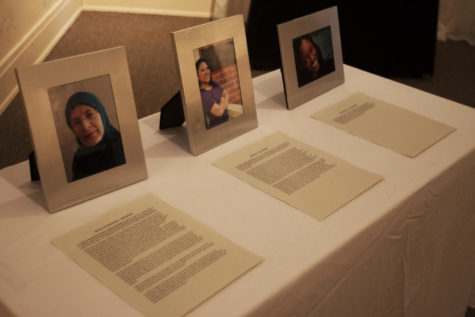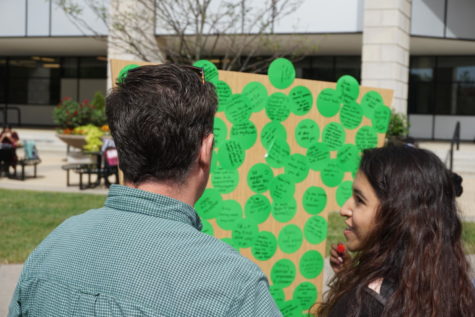Part three: The investigation begins
January 28, 2022
Editor’s Note: This article is the third part in a five-part series telling the story of Sheila Jean Collins, an Iowa State student who was murdered in 1968. Part two can be read here.
Content Warning: This article contains mentions of sexual and physical assault.
Then-Story County Sheriff J.I. Shalley was the lead investigator in Sheila’s case. On Monday, the day after her body was found, Shalley told the media that detectives had not identified any suspects.
Investigators had collected evidence at the scene, including Sheila’s personal belongings and the rope around her neck. However, evidence collection for homicide investigations at the time looked very different than it does today.
“You go back to 1968, nobody knew DNA was even going to be a thing,” said Anthony Rhoad, the current investigations sergeant for the Story County Sheriff’s Office in Nevada, Iowa. “So what they would have collected back then is completely different than how we would process a scene now.”
In 1968, fingerprint technology was still evolving. Other technologies like forensic testing and GPS tracing were nonexistent.
In Sheila’s case, many leads were cut short due to a lack of evidence.
“It doesn’t seem like that long ago, but you look at 1968: How do you get caught committing a murder? If you’re killing someone that you don’t personally know, you should have gotten away with it every time,” Rhoad said.
An autopsy was ordered the day after the body was found, and the results confirmed the nylon rope and metal pipe were used to strangle Sheila. The killer secured the pipe to the rope and rotated it to tighten the grip around her neck.
Based on the autopsy report, investigators concluded that Sheila was killed in a different location from where she was found, and the killer later disposed of her body.
The autopsy also reported that there were no signs Sheila had been raped. According to Rhoad, however, the medical examiner’s conclusion might have been flawed. He believes it is possible Sheila was sexually assaulted.
“You stripped her down, left her naked, posed her on her hands and knees…It was obviously sexually motivated,” Rhoad said.
Without access to DNA technology, testing for sexual assaults in 1968 involved the use of light and magnification to look for minor tears or trauma in the genitals. However, many sexual assaults do not leave a physical record on the victim’s body.
“How do you describe it wasn’t sexual just because there’s not penetration that would leave some sort of a trauma?” Rhoad said.
According to former Story County Attorney Mary Richards, there were other missteps in the investigation.
“There were definitely some things that hadn’t been done at the time of initial investigation that should have been done,” Richards said. “The medical examiner, for instance, had not taken fingernail scrapings, which is something that would be a standard thing for a medical examiner to do in a suspected homicide case.”
A sample of Sheila’s fingernail scrapings could have provided forensic evidence connecting a potential suspect to the crime.
Additionally, the day after Sheila’s body was found, her ride-share card was still posted at the Memorial Union and had not been dusted for fingerprints.
Sheila’s body was cremated in Des Moines within days of her death, which eliminated the possibility of collecting more evidence.
“They responded to the call about 4:30 p.m. … and then within two hours the body had been removed to a funeral home in Ames,” said Nancy Bowers, a historian and researcher who studied Sheila’s case for years. “And by 8:30 that night, it was over, [and] she had been cleaned up.”
On Wednesday, Jan. 31, Sheila’s funeral service was held at St. Matthew Episcopal Church in her hometown of Evanston, Illinois.
While Sheila’s family mourned, the Iowa State community sought answers about her murder.
In February, six more agents were assigned to Sheila’s case full-time, joining two Ames police officers and a Story County deputy sheriff. The Iowa State Daily established a reward fund for any information leading to an arrest in Sheila’s murder.
Following the leads
By March, investigators had conducted more than 700 interviews and followed up on about 200 leads.
Detectives worked to interview as many people as possible before the investigation dried up. They spoke with her family, friends, roommates and anyone else who might have information about the killer.
Several witnesses had seen Sheila enter the car the night of her death. They described a conventional-looking young man driving a dark blue Volkswagen sports car with an oval-shaped window.
Other witnesses described a man of average height and weight with short, dark hair sifting through cards at the ride-share board the night before the murder.
A female Iowa State student told investigators a man driving a blue Volkswagen had offered her a ride after she posted her number on the ride board. However, the man drove away after he noticed the girl’s brother waiting with her.
Initially, Sheila’s boyfriend was a suspect in her death. However, he was quickly ruled out after completing a polygraph test.
“Ira has an ironclad alibi,” Bowers said. “He and Sheila called frequently, and the phone records indicate they spoke as late as seven o’clock at night. And he was in [Illinois]. So there’s just no way he could have been a name.”
One lead directed officers to a highway gas station. Soon after the murder, officers received a tip that five college-age boys had been spotted with a long-haired girl at a service station along the highway the night Sheila disappeared. The service station was located a mile southeast of where her body was found.
Additionally, Sheila’s body was found with a handful of change despite leaving her dorm with $2, leading investigators to believe she and the killer had made a stop after she was picked up. The lead was promising, but officers reached a dead end shortly after examining it.
Investigators also explored whether the killing was connected to another death nearby. The same day Sheila’s body was found, another girl was found dead only two counties away. Oddly, the 20-year-old student was also named Sheila. Sheila Harrison’s body was discovered in Fort Dodge, Iowa, about an hour’s drive from Ames. Officers never uncovered a connection between the two deaths.
Investigators gave “undue time and energy” to even senseless leads, according to Bowers.
“A faculty member’s wife, Barbara Gordon, dreamed that a man named ‘Armstrong’ had killed Sheila,” Bowers said. “She felt compelled to contact investigators, who took the dream seriously enough to send Captain Flora of the Ames Police Department and BCI Special Agent Warren Stump to interview her.”
Gordon looked up the name in the student directory and found a man named John Wayne Armstrong. Armstrong was from Skokie, Illinois, a town located minutes away from Sheila’s hometown.
Armstrong was thoroughly investigated solely because of Gordon’s dream.
“His application to ISU was reviewed, his courses and grades scrutinized, his automobile tracked, and his comings and goings to Skokie, Illinois, followed, even though he had done nothing suspicious nor had any criminal record,” Bowers said.
The investigators took Gordon’s claims so seriously that they encouraged her to be in touch if she had future dreams.
Detectives pursued every lead in Sheila’s case but found few answers. Eventually, progress on the case halted.
On July 4, 1968, Shalley told the media that his office was no longer actively investigating Sheila’s murder.
Decades of questions have loomed over Sheila’s homicide, and no one has ever been charged with the crime. After following up on countless leads and conducting hundreds of interviews, investigators narrowed the list of suspects to a few possible candidates. According to Rhoad, any one of them could have committed the crime.
“When you look at the suspects, you almost think that any one of them could have done it,” Rhoad said. “It’s not like most cases where you’re lucky to find one subject that you’re pretty confident is your main suspect.”
None of the suspects in Sheila’s murder had any connection to her while she was alive. Even more confusing is that no clear motive for the crime has emerged in the years since her death.
“None of them have ever really been cleared,” Rhoad said. “The primary suspects are the ones that there was no way to clear them, and they were still viable suspects.”
Read part four here.

















